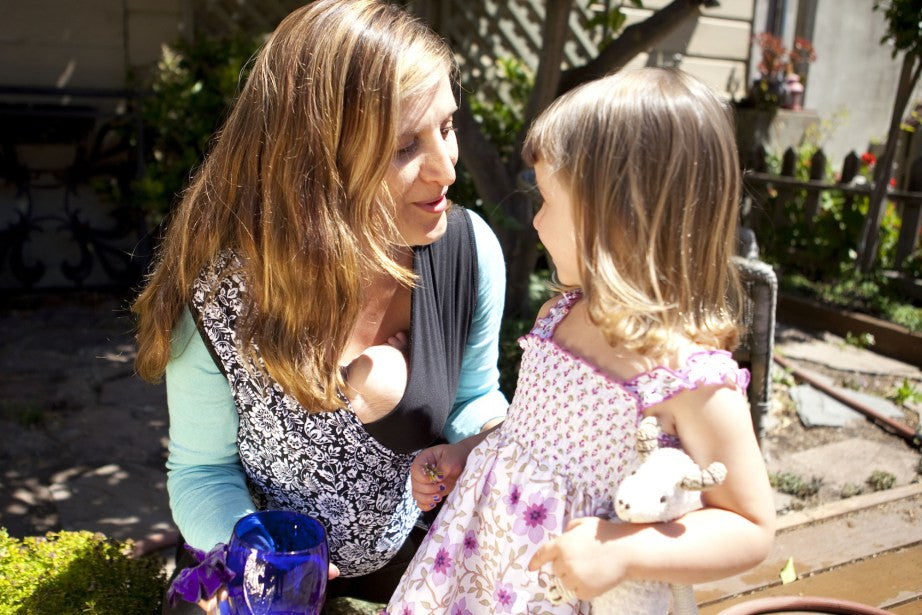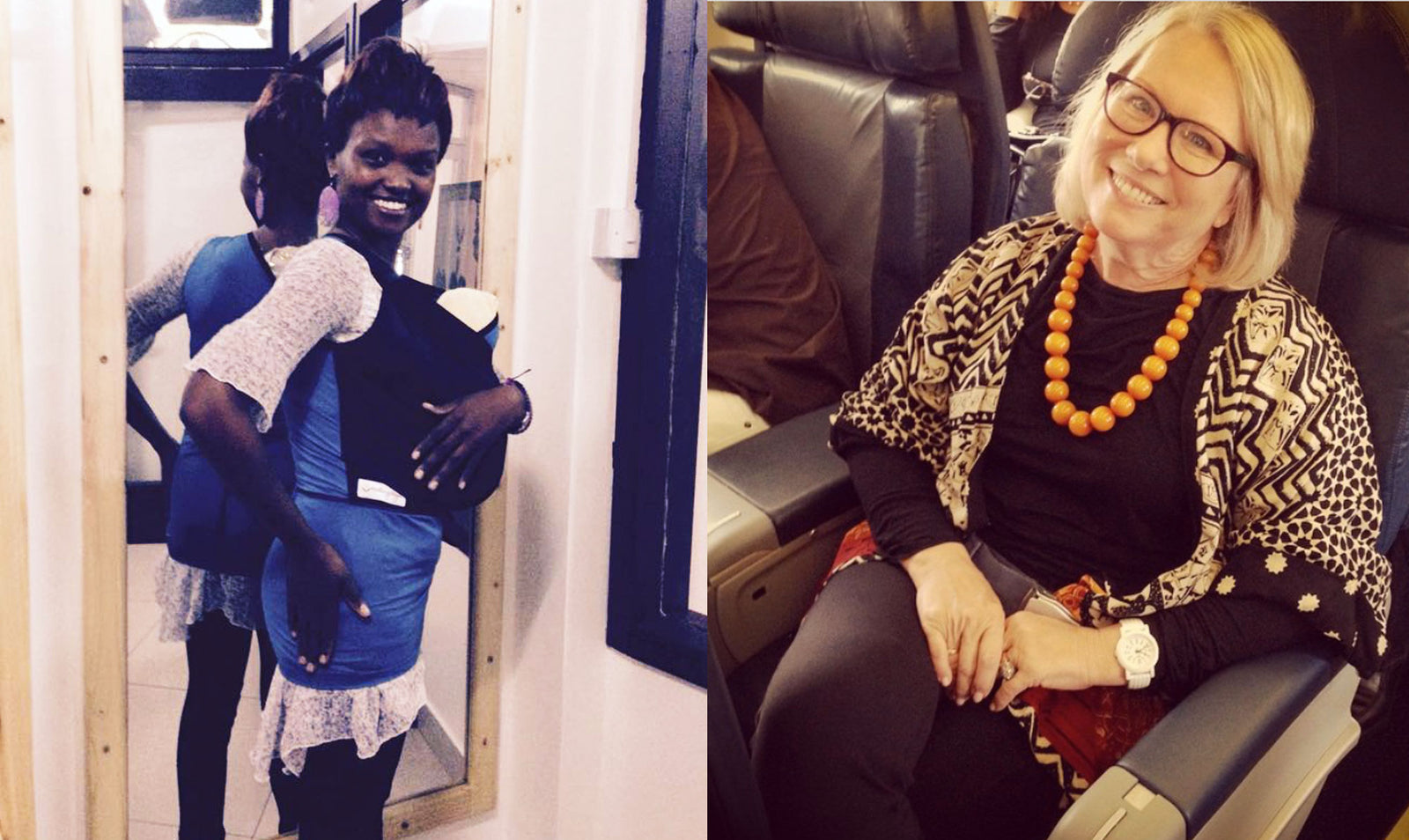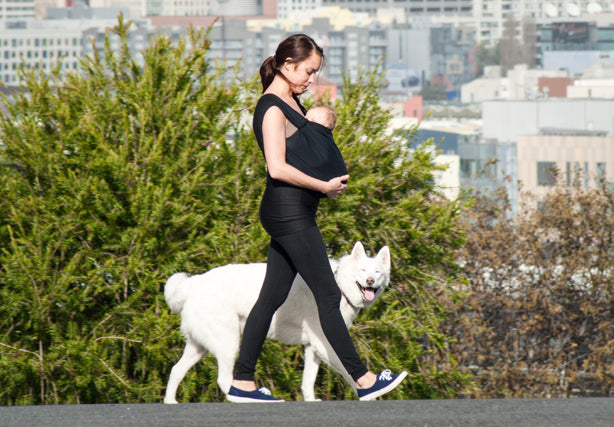
I love the picture of mother and baby in my garden that is on my current home page!
She has a radiant smile on her face, baby is happy, and as the mother of the Nesting Days Newborn Carrier, I was all smiles too. While we snapped a few pictures and chatted, she shared with me how much she loved being close with her baby, and I shared with her how happy I to be able to give them something that made it easier and more comfortable for them to hang out together.
Joseph Chilton Pearce, a faculty member on child development at the Jung Institute in Switzerland and the author of many books on mother-baby bonding, has this to say about separation. Separation of mother and baby after birth is the most devastating event of life, which leaves us emotionally and psychologically crippled.’
In 1969, after giving birth to my first beautiful baby boy, he was whisked away to the nursery immediately after he was born. I was told I couldn’t see him for 24 hours. They finally brought him to me about 6 hours later, after I had made their life as miserable as they had made mine.
Seven years later, in 1976, I gave birth at Mt. Zion Hospital in San Francisco in a queen-sized bed, with my husband at my side. The room was quite, I was calm, and this time my baby was placed on my chest immediately. I could feel his tiny heart flutter against mine as I put him to my breast moments after he was born. I was supported by caring, loving professionals who understood the preciousness of this moment. Today, all hospitals are encouraged to practice skin-to-skin contact following birth.
The evidence is in, but hospitals are busy places. Skin-to-skin takes time, and time is money. C-Section moms rarely get more than a few minutes with their newborns. Premature babies need even more skin-to-skin, but in the ‘best’ hospital in SF, the pumping room is down the hall, away from the babies. I’ve had more than one mother bond with her breast pump.
While I’ve address the importance of skin-to-skin at birth in this blog, the evidence supports skin-to-skin contact for at least the first three months, but I question why we have to put a limit on it at all? What are we afraid of? Of being too close? According to Joseph Pearce, our initial bond influences our later ability to interact with others throughout our life. Are our experiences in the first 18 months the roots of love, and also the roots of violence?
As I watch ‘Mad Men’s’ most recent episode, the title is crystal clear.
They are very mad men.
Have you hugged your child today?
Julie, Your Chief Mother Officer





Leave a comment (all fields required)